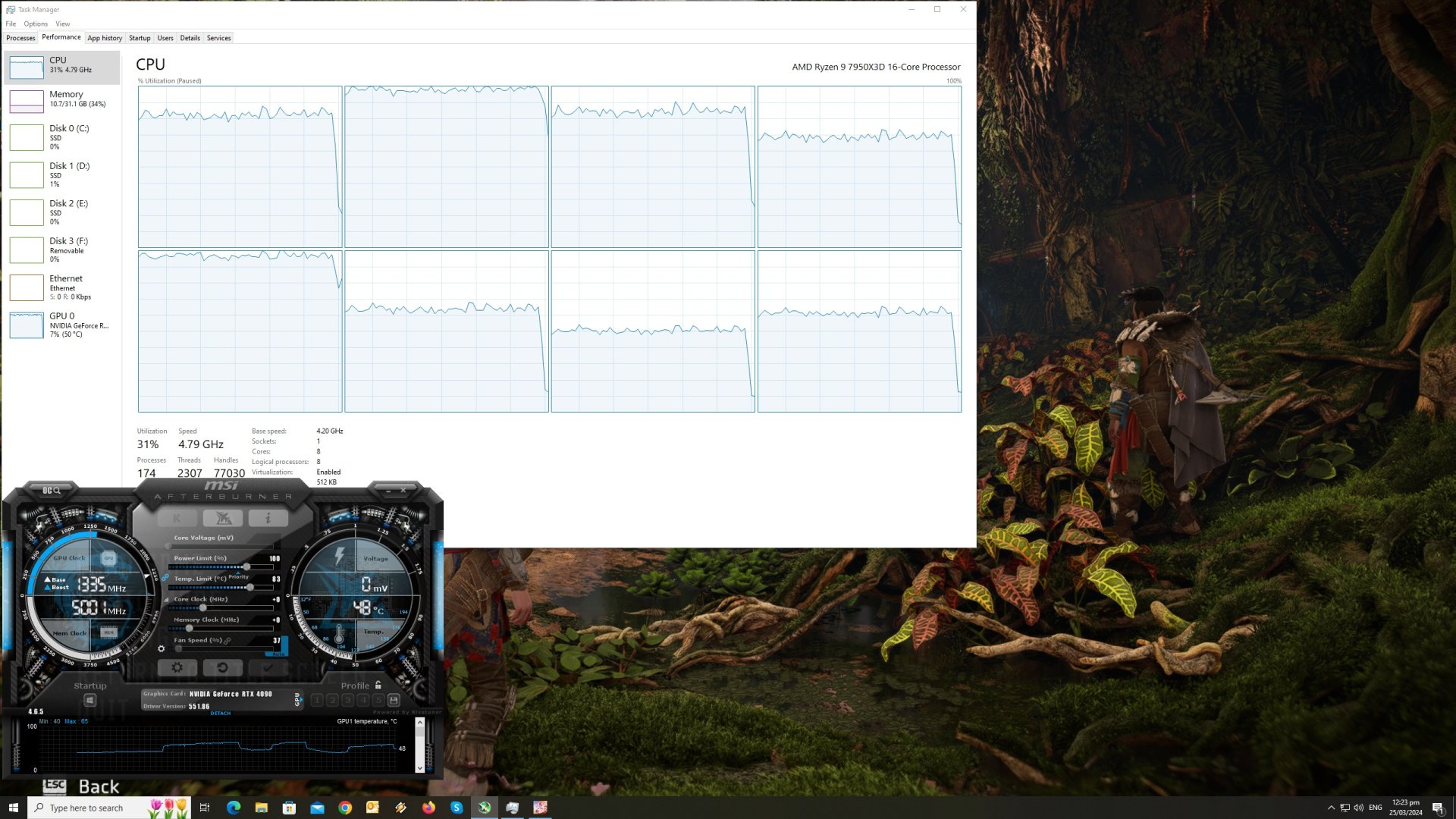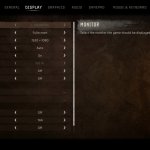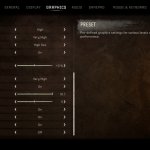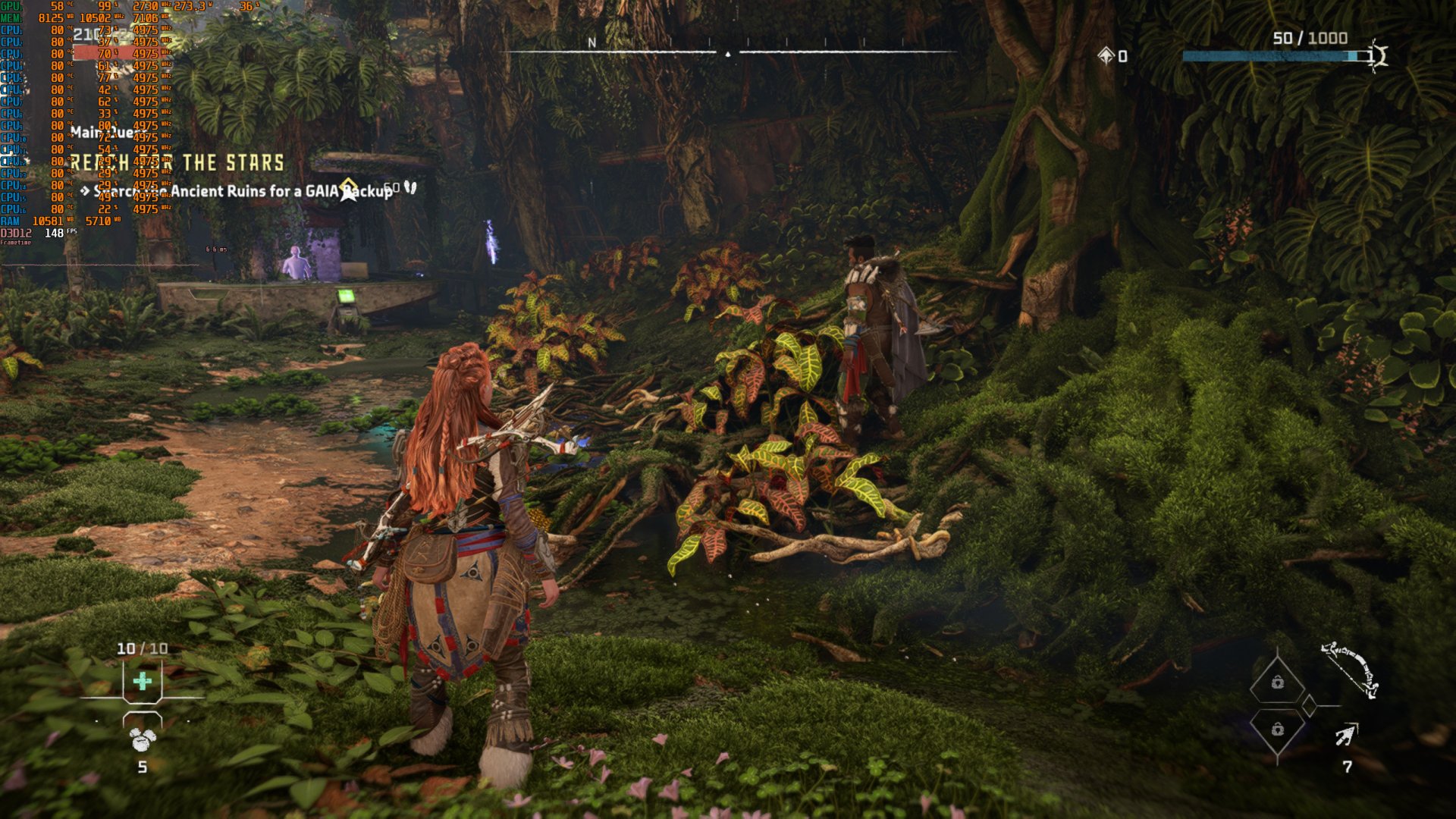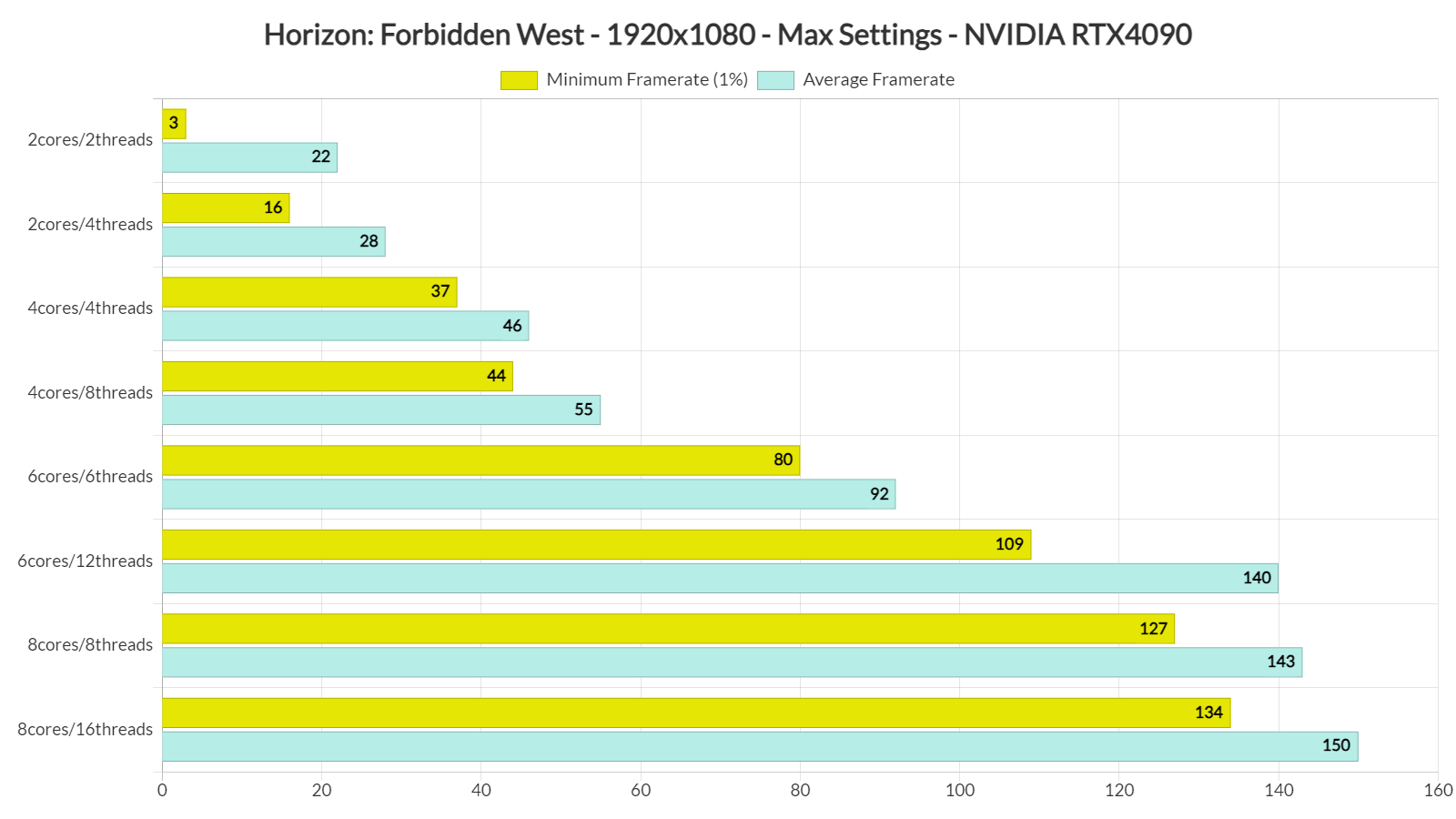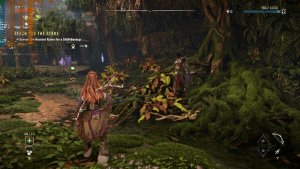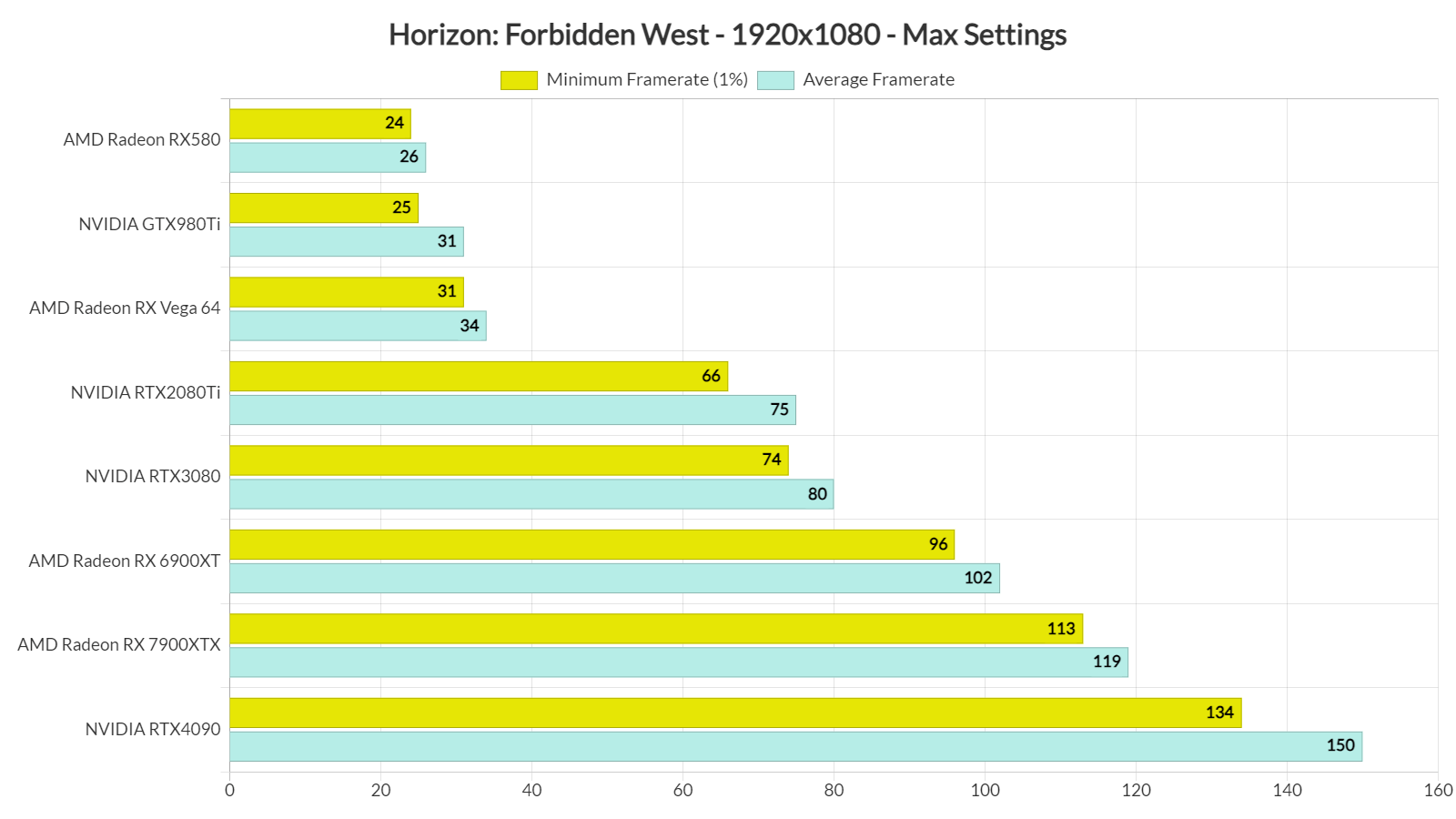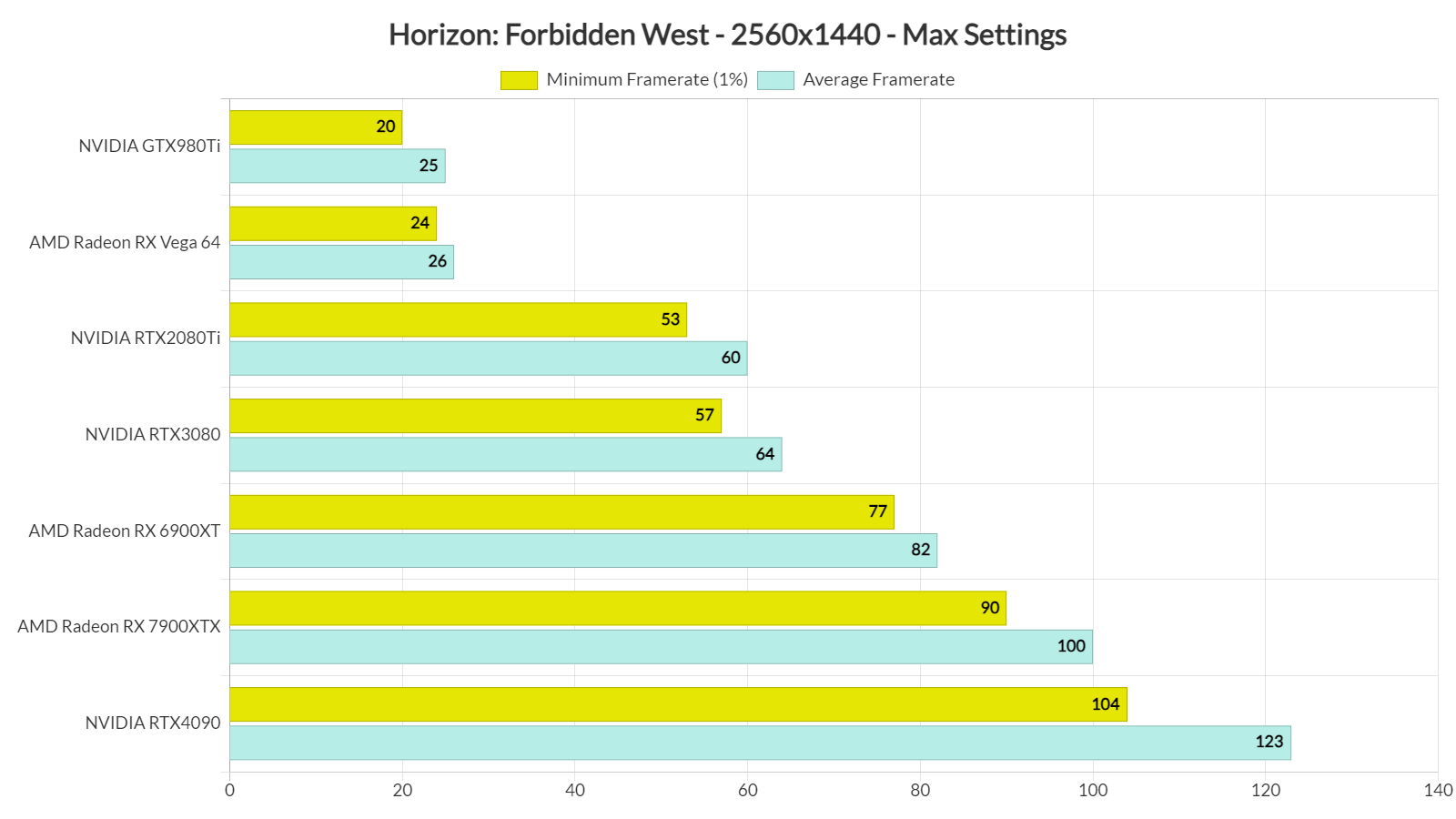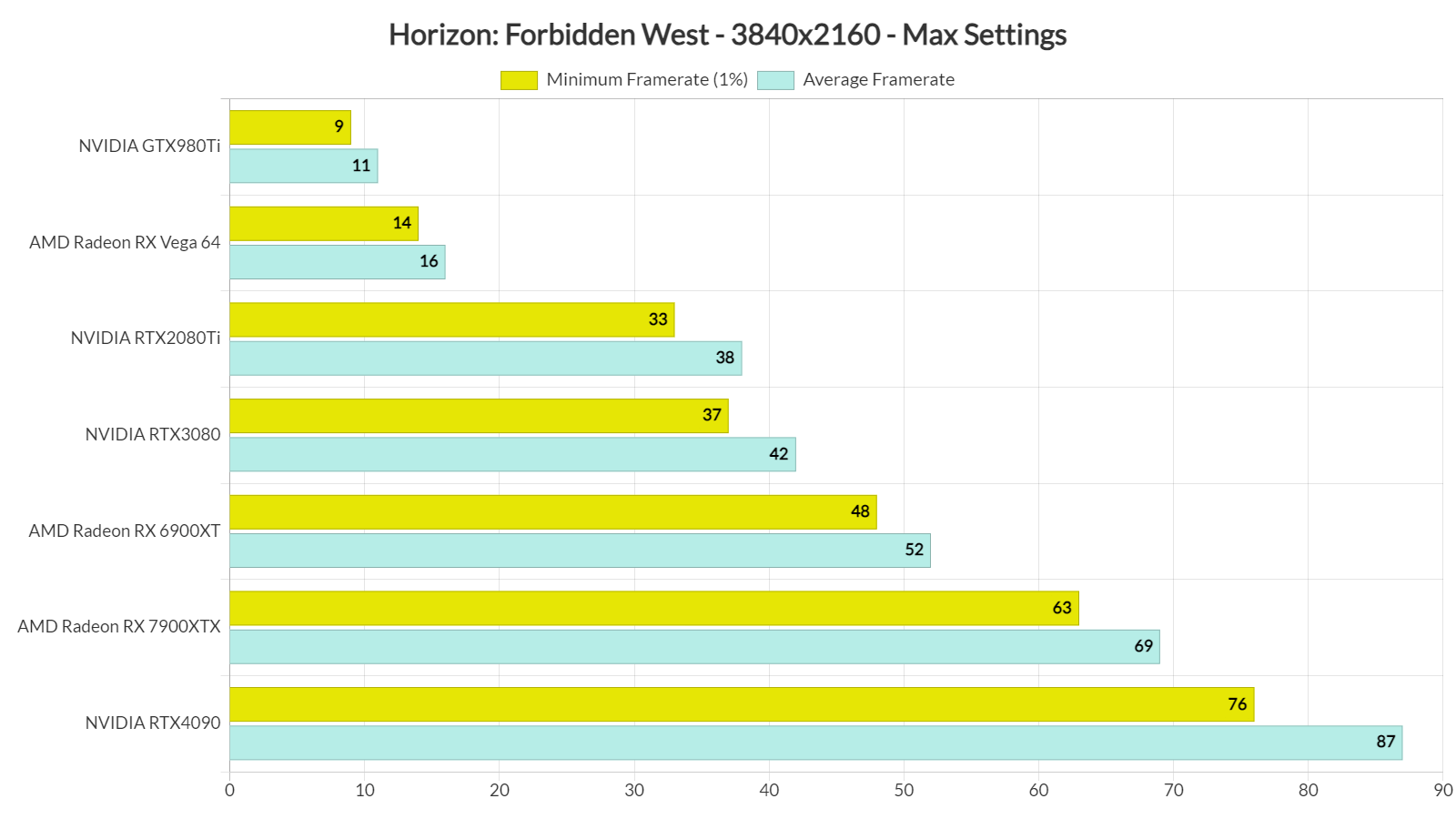Last week, Sony released the Complete Edition of Horizon: Forbidden West on PC. Powered by the Decima Engine and ported by Nixxes, it’s time to benchmark it and examine its performance on the PC platform.
For our benchmarks, we used an AMD Ryzen 9 7950X3D, 32GB of DDR5 at 6000Mhz, AMD’s Radeon RX580, RX Vega 64, RX 6900XT, RX 7900XTX, NVIDIA’s GTX980Ti, RTX 2080Ti, RTX 3080 and RTX 4090. We also used Windows 10 64-bit, the GeForce 551.86, and the Radeon Adrenalin Edition 24.3.1 drivers. Moreover, we’ve disabled the second CCD on our 7950X3D.
Nixxes has added a lot of graphics settings to tweak. PC gamers can adjust the quality of Textures, Water, Clouds, Hair, Crowd, Level of Detail and more. The game also has a FOV option, and supports DLSS 3 Frame Generation, as well as Intel XeSS and AMD FSR 3.0 Super Resolution. However, there is currently no support for AMD FSR 3.0 Frame Generation.
Contrary to Horizon Dawn, Forbidden West does not feature any built-in benchmark tool. So, for our tests, we benchmarked this area. From what we could see, this was a really demanding area early in the game. As such, it should give us a pretty good idea of how the rest of the game runs.
To see how the game runs with different types of CPUs, we simulated dual-core, quad-core, and hexa-core CPUs. And, to my surprise, the game requires 16 CPU threads for smooth gaming. In our benchmark area, a modern-day quad-core system with SMT suffered from numerous stuttering issues. Without SMT, even our AMD Ryzen 9 7950X3D with all of its eight CPU cores had some stutters. The only way we could get smooth frameratimes was by enabling SMT/Hyper-Threading on all eight cores (meaning that the game had access to 16 CPU threads).
Here, take a look at these screenshots. On the left, we have a simulated CPU with 6 CPU cores and 12 threads, and on the right, we have 8 CPU cores with 16 threads. You can clearly see the frametime spikes/stutters on the 6-core CPU system (also notice the lower GPU usage due to the stutters). And yes, I was able to replicate this multiple times.
So make no mistake. While the minimum and average framerates on a six-core CPU system are above 60fps at all times, you’ll need a top-of-the-line CPU with lots of threads for a stutter-free experience.
At 1080p/Max Settings, most of our GPUs were able to push over 60fps at all times. At 1440p/Max Settings, though, things got a bit more demanding as the NVIDIA RTX3080 could drop to the mid-50s. So yes, this is a really demanding title for gaming at native resolutions. And as for native 4K/Max Settings, the only GPUs that could provide a smooth gaming experience were the AMD Radeon RX 7900XTX and the NVIDIA RTX 4090.
Graphics-wise, Horizon: Forbidden West looks amazing. From the character models to the environments, everything looks stunning. Still, I was kind of hoping to see an even better LOD/View Distance than what we got as there are a lot of pop-in issues. Other than that, though, there is nothing to complain about. Horizon: Forbidden West is one of the best-looking games on PC right now, even though it does not feature any Ray Tracing effects.
All in all, Horizon: Forbidden West requires a top-of-the-line PC system for gaming at Max Settings. Thankfully, the game’s visuals justify its GPU requirements. To be honest, though, I’m a bit shocked by its CPU requirements. This is the first time I see a game suffering from stutters on CPUs with 12 threads. Not only that but as we saw in our screenshot, some of those threads weren’t maxed out. So, there is definitely room for improvement here. Other than that, Horizon: Forbidden West is pretty solid on PC. There is already support for most PC upscalers, there is a FOV slider, there are lots of options to tweak, the KB&M controls are exceptional, and we did not experience any stability issues.
Enjoy!

John is the founder and Editor in Chief at DSOGaming. He is a PC gaming fan and highly supports the modding and indie communities. Before creating DSOGaming, John worked on numerous gaming websites. While he is a die-hard PC gamer, his gaming roots can be found on consoles. John loved – and still does – the 16-bit consoles, and considers SNES to be one of the best consoles. Still, the PC platform won him over consoles. That was mainly due to 3DFX and its iconic dedicated 3D accelerator graphics card, Voodoo 2. John has also written a higher degree thesis on the “The Evolution of PC graphics cards.”
Contact: Email


